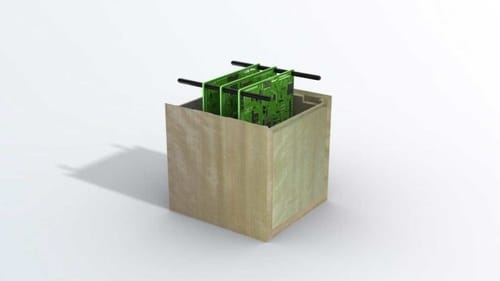 |
| Japan develops wooden satellite to reduce space waste |
Japan's Sumitomo Forestry Corporation and Kyoto University have developed a system they hope will be the world's first wooden satellite by 2023 that will reduce wasted space.
Sumitomo Forestry said it has begun studying tree growth and the use of wood materials in space.
The company is expected to experiment with different types of woods in the harsh environment of the earth.
As more and more satellites are launched into the atmosphere, space waste is becoming an increasingly serious problem.
Wooden satellites must burn up without releasing harmful substances into the atmosphere or returning debris to Earth.
"We fear that any satellites entering the Earth's atmosphere will burn up again, resulting in fine aluminum oxide particles that have been floating in the upper atmosphere for many years. Years," said Kyoto University professor and Japanese astronaut Takai.
The Japanese astronaut added: This will affect the Earth's environment, and the next step will be to develop technical models for satellites, and after that we will make flight models.
Sumitomo Group is part of the Sumitomo Group Sumitomo Forestry Group, which was established more than 400 years ago, which develops hardwood materials that can withstand changes in temperature and sunlight.
Experts warn that as more spacecraft and satellites launch, the risk of space debris falling to Earth increases.
Satellites are increasingly being used for communications, television, navigation, and weather forecasting, and space experts and researchers are exploring various methods to eliminate and reduce wasted space.
According to the World Economic Forum, about 6,000 satellites orbiting the Earth, about 60% of which have been turned into space debris.
Research firm Euroconsult estimates that 990 satellites will be launched each year for this decade, which means that by 2028 there will be 15,000 satellites in orbit.
SpaceX has launched more than 900 satellites for the Starlink project and plans to deploy more satellites.
Space debris is moving at speeds of more than 22,300 miles per hour, which could cause significant damage to any creature it encounters.
In 2006, a small piece of space debris collided with the International Space Station and a hardened window appeared.
